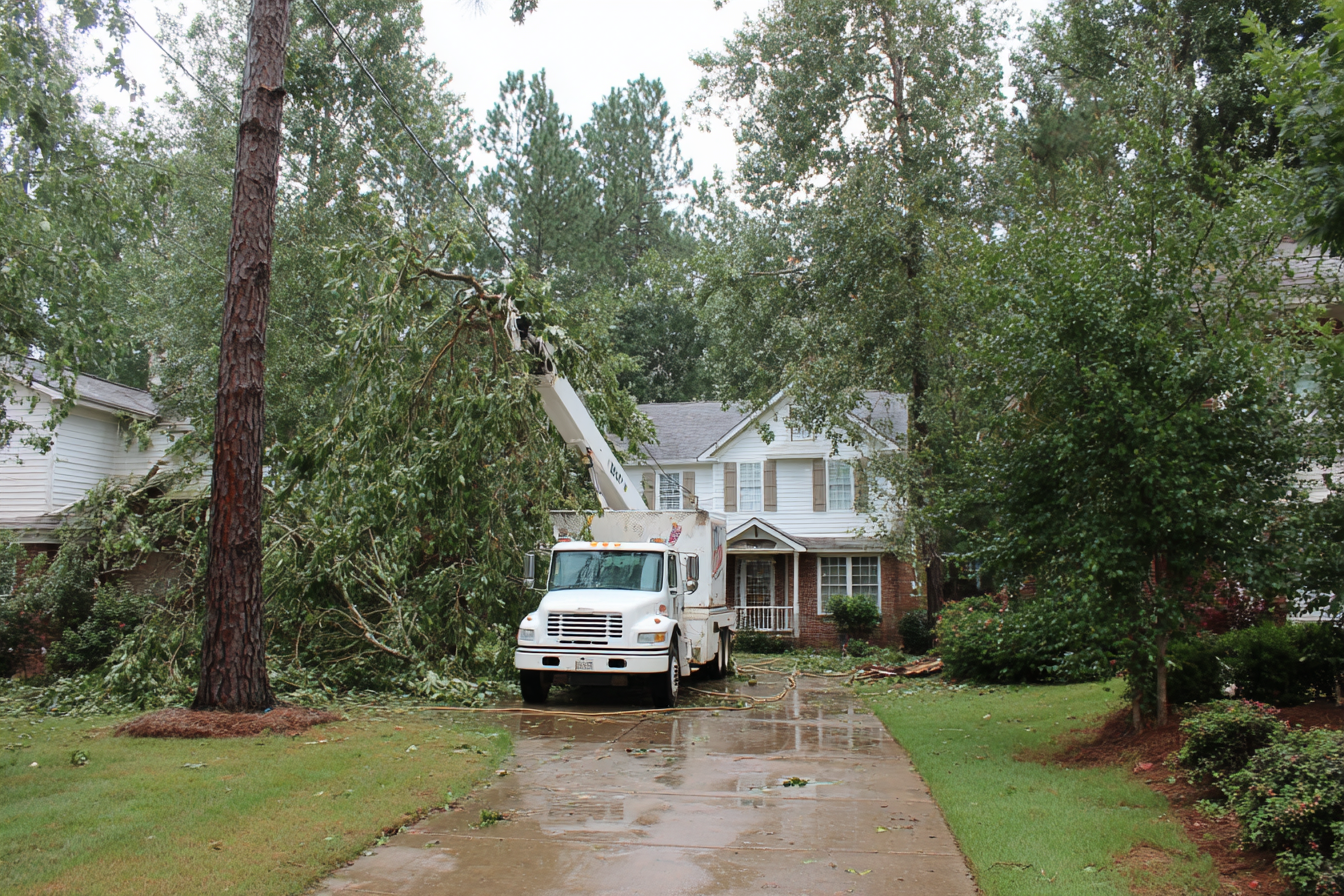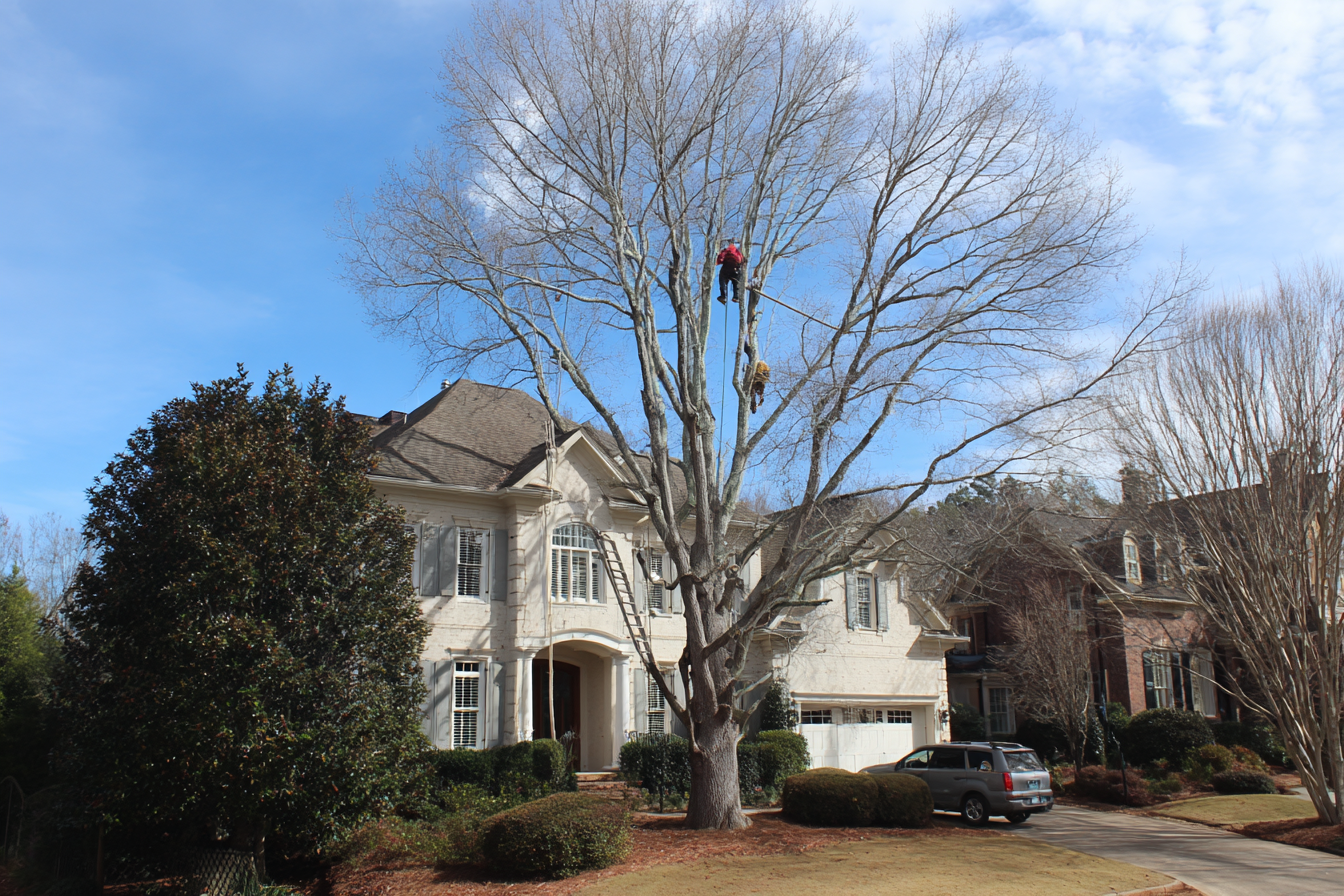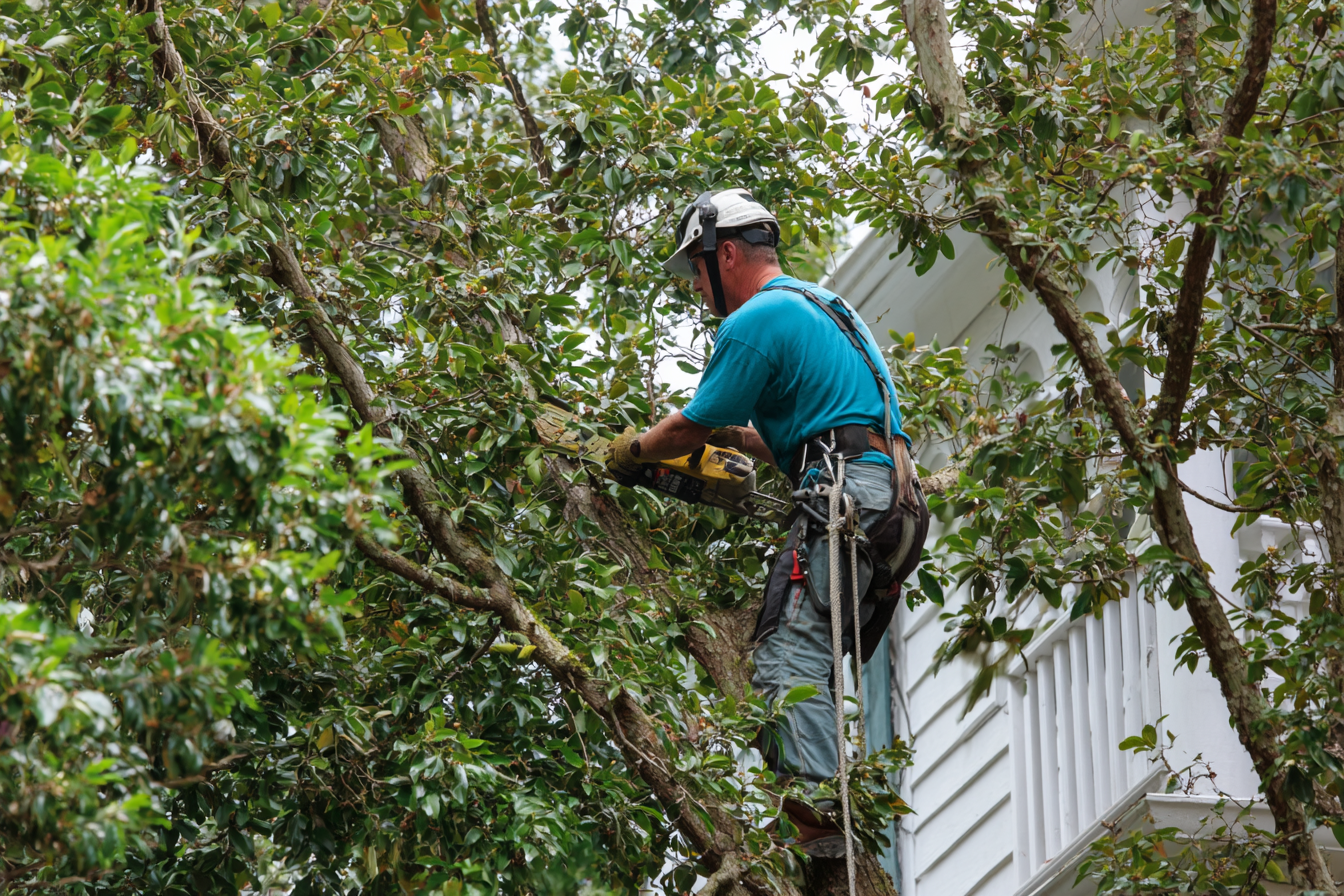
Living in Georgia, we know that the weather can be a bit of a rollercoaster. From sweltering summer thunderstorms to surprising winter ice events, our trees face a constant battle against the elements. You might think of a tree as a solid, unmovable part of your landscape, but in the face of high winds, heavy rain, or a layer of ice, even the most majestic tree can become a serious hazard. We’ve all seen the aftermath: fallen branches blocking roads, trees toppled onto homes, and power lines brought down, causing widespread outages. This damage isn't just an inconvenience; it can be incredibly costly and even dangerous. So, what can you do to protect your property and your loved ones? The answer lies in being proactive rather than reactive. Instead of waiting for a storm to cause a problem, you can take pre-emptive measures to ensure your trees are as resilient as possible. This isn't just about a quick fix; it's about a long-term strategy that focuses on the health and structural integrity of your trees. The key to this strategy is professional pruning and thinning.
What Is the Difference Between Pruning and Thinning?
While the terms "pruning" and "thinning" are often used interchangeably in casual conversation, they actually refer to distinct, though related, arboricultural practices. Think of pruning as the broad category. It's the general process of selectively removing parts of a plant, such as branches, buds, or roots, for a specific purpose. This purpose can be anything from improving the tree’s overall health and appearance to promoting better growth or removing dead and diseased limbs. Pruning is a fundamental part of proper tree care, and it’s done year-round, depending on the tree species and the goal of the cut.
Thinning, on the other hand, is a specific type of pruning. It focuses on the strategic removal of smaller, live branches from the interior of the tree's canopy. The goal of thinning is not to reduce the overall size of the tree but rather to make the canopy less dense. By selectively removing these branches, arborists can increase light penetration and air circulation throughout the tree. This helps the remaining foliage and branches grow stronger and healthier. More importantly, it dramatically reduces the "sail effect" of the tree’s canopy, which is the resistance a tree provides to the wind. Imagine a solid wall versus a fence; a fence allows the wind to pass through, while a solid wall must bear the full force. A thinned tree acts more like a fence, allowing wind to move through its structure rather than pushing against it.

How Does Strategic Pruning Make a Tree More Resilient to Storms?
Strategic pruning is an art and a science, and its primary role in storm resilience is to create a stronger, more balanced, and less vulnerable tree. When a professional arborist prunes a tree with storm resilience in mind, they are looking for specific issues that could become critical points of failure during high winds.
- Removing Dead or Diseased Limbs: This is perhaps the most obvious and critical step. Dead or dying branches are weak and brittle. They are the first to snap and fall during a storm, posing an immediate threat to anything below. A professional arborist can identify these weakened limbs and remove them safely, eliminating a major hazard.
- Improving Structural Integrity: Pruning helps to correct poor tree structure. This can include removing competing leaders (two main trunks vying for dominance), which can create a weak, V-shaped crotch that is prone to splitting. It can also involve removing limbs that are rubbing against each other, as this can cause bark damage and create entry points for pests and diseases. By improving the tree's architecture, you are building a stronger foundation that can withstand stress.
- Balancing the Crown: An uneven or lopsided crown can make a tree top-heavy and unstable. Strategic pruning can balance the weight distribution of the tree, ensuring that it is less likely to lean or topple over in strong winds. This is particularly important for trees on slopes or those with root systems that may be compromised.
- Enhancing Overall Health: Pruning helps to stimulate new, healthy growth. It can also improve the tree’s ability to resist pests and diseases by removing infected areas and promoting better air circulation. A healthy tree with a robust root system and strong limbs is simply better equipped to handle the rigors of a storm.
How Does Thinning Reduce the Risk of Wind Damage?
Thinning is the specific pruning technique that directly addresses the "sail effect" we discussed earlier. It is a highly effective pre-emptive measure for mitigating wind damage. By selectively and evenly removing branches from the interior of the crown, professional arborists achieve several key benefits that enhance the tree's ability to withstand high winds.
- Reducing Wind Resistance: When a tree's canopy is dense and full of foliage, it acts like a giant sail. High winds push against this "sail" with immense force, putting tremendous stress on the tree's trunk, main branches, and root system. This stress can cause the tree to snap, uproot, or lose large limbs. By thinning the canopy, you create channels for the wind to pass through. This reduces the pressure exerted on the tree, allowing it to "bend" rather than "break."
- Alleviating Canopy Weight: A thick, un-thinned canopy is not only a sail for the wind but also a heavy burden. This weight is amplified when rain or ice accumulates on the branches. Thinning reduces the overall weight of the tree's crown. This is especially crucial for trees with weaker branch unions or those growing in saturated soil, where the added weight can easily lead to a catastrophic failure.
- Promoting Deeper Root Growth: By allowing more sunlight to reach the lower parts of the tree and the ground below, thinning can indirectly promote healthier, deeper root growth. A stronger, more extensive root system anchors the tree more securely in the soil, making it far less susceptible to uprooting during a storm.
What Are the Risks of Not Taking Pre-emptive Action?
Ignoring proper tree maintenance is a gamble, and in Georgia’s climate, the odds are stacked against you. The risks associated with neglecting your trees far outweigh the effort and cost of proactive care.
- Property Damage: This is the most immediate and costly risk. A single falling branch or a toppled tree can cause extensive damage to your home, roof, vehicles, fences, and landscaping. The cost of repairs can be staggering, often far exceeding the price of a professional tree service.
- Safety Hazards: The safety of your family and neighbors should be your top priority. A falling tree or limb can cause serious injury or even death. Weakened trees near high-traffic areas, playgrounds, or public walkways are a significant liability.
- Power Outages: In Georgia, many power lines run through wooded areas. When a storm-damaged tree falls on a power line, it can cause widespread power outages, affecting not just your home but your entire community. This can disrupt daily life, compromise essential services, and lead to food spoilage and other inconveniences.
- Increased Liability: As a property owner, you are legally responsible for the trees on your land. If a tree or limb falls from your property and damages your neighbor’s home or a public utility, you could be held liable for the damages. Regular, documented tree maintenance can help protect you from such legal and financial repercussions.

Why Is a Professional Service Essential for This Work?
While it may be tempting to grab a ladder and a saw to "do it yourself," the risks associated with improper pruning and thinning are immense. Tree care is a specialized field that requires knowledge, experience, and the right equipment.
- Safety First: Climbing trees and operating chainsaws at height is extremely dangerous. Professional arborists are trained in proper safety procedures and use specialized gear to perform the work without incident. They know how to identify and mitigate risks to themselves and your property.
- Expert Knowledge: A certified arborist understands the unique growth habits of different tree species. They can identify subtle signs of disease, decay, or structural weakness that an untrained eye would miss. They know precisely which branches to remove and where to make cuts to promote healing and not harm the tree.
- Proper Techniques: Incorrect pruning can do more harm than good. "Topping" a tree, for example, is a common but devastating practice that creates weak, fast-growing sprouts that are even more susceptible to storm damage. Professionals use techniques like crown thinning and selective pruning that are scientifically proven to enhance a tree's health and longevity.
- The Right Equipment: Professional tree services like Georgia Pro Tree Service have the heavy-duty equipment needed to safely and efficiently handle large limbs and full tree removals. This includes lifts, chippers, and specialized rigging systems that are not accessible to the average homeowner.
Conclusion: Proactive Tree Care is Your Best Defense
Living in Georgia means embracing the beauty of our natural landscape, but it also means being prepared for its unpredictable nature. When it comes to protecting your property and ensuring the safety of your family, taking a proactive approach to tree care is the smartest investment you can make. The small cost of professional pruning and thinning now can save you thousands of dollars in property damage and a great deal of stress down the road. It's not just about removing a few branches; it’s about fortifying your trees, turning potential hazards into resilient, beautiful assets that will stand strong against the next big storm.
Don't wait until the next weather alert to think about your trees. Take action today to ensure they are prepared.
Ready to make your trees storm-ready? Contact the experts at Georgia Pro Tree Service today for a free consultation. Our certified arborists can assess your trees and provide a tailored plan for pruning and thinning to protect your property. Give us a call or visit our website to schedule your appointment!
FAQ Section
Q1: How often should my trees be professionally pruned and thinned?
A1: The frequency of pruning and thinning depends on the tree's species, age, and health. As a general rule, most mature trees benefit from being pruned every 3-5 years. Younger trees may need more frequent shaping and structural pruning to ensure they develop a strong, healthy framework. After a major storm, an assessment is highly recommended to identify any hidden damage. A professional arborist can create a customized maintenance plan for your specific trees.
Q2: Can pruning a tree make it look "bald" or unnatural?
A2: No, not with a professional service. The goal of proper thinning is to maintain the tree's natural shape while removing only the necessary branches. An expert arborist will make strategic, inconspicuous cuts that improve the tree's health and wind resistance without making it look "bald" or over-pruned. The final result should be a more open, healthier-looking tree that still retains its beautiful aesthetic.
Q3: Is it possible to prune a tree too much?
A3: Yes, it is very possible to over-prune a tree, which can cause significant stress and even kill it. A common mistake is removing too much of the tree's canopy, a practice known as "topping." Topping removes too many leaves, which the tree needs to produce food through photosynthesis. This severe stress can lead to weak, unhealthy growth, making the tree even more vulnerable to future storm damage and disease. This is why it is critical to hire a trained professional who understands the proper amount of canopy to remove for each species.
Q4: What time of year is best for pruning trees in Georgia?
A4: The best time for pruning depends on the tree species. For most deciduous trees (those that lose their leaves), late fall and winter are ideal because the tree is dormant and the lack of leaves makes it easier to see the branch structure. However, there are exceptions, such as spring-flowering trees, which should be pruned after they finish blooming. For storm resilience, pruning can be done at any time of year when a hazard is identified. A professional arborist can advise you on the best time for your specific trees.
Q5: How do I know if my tree is a hazard and needs immediate attention?
A5: There are several signs that a tree may be a hazard. Look for large, dead branches (especially those hanging over your home or power lines), deep cracks in the trunk, a visible lean, or areas of decay or fungus growth. A sudden increase in leaning or root system heave is also a red flag. If you notice any of these signs, it is crucial to contact a professional arborist immediately for an assessment. Ignoring these signs can lead to catastrophic failure during the next storm.

We're your local tree pros!
Georgia Pro Tree Services takes the highest quality of care when servicing your trees. Call us to find out how we can help you keep your yard in top shape.



